In the American Southwest today one of the most popular art forms sought by museums, collectors, and tourists is the Navajo rug. While the Navajo had been weaving for centuries and their works were traded over a wide area, the development of the Navajo rug really started in 1881 with the arrival of the railroad. The railroad connected the Navajo with the globalized market for native crafts. This market, however, was controlled by non-Indian traders who held federal licenses. The idea of allowing Indians to participate in a free market ran counter to the “civilization” programs run by the federal government in which it was assumed that Indian people were somehow a “dependent” people who must be guided, managed, and controlled by the more “civilized” non-Indians.
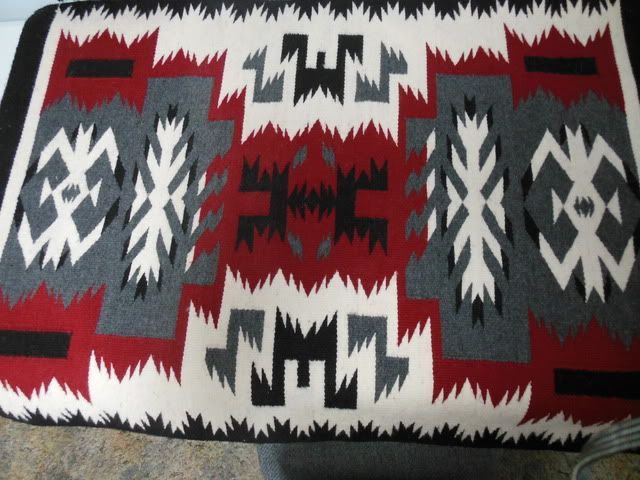
The incorporation of the Navajo into a global market meant that the weavers were increasingly incorporated into the cash economy of this market. The period from 1875 to 1890 is generally considered a transition period for the Navajo weavers. During this time they began to use commercial American-made yarns known collectively as Germantown. These yarns were dyed with aniline (a dye derived from coal tar) and provided primarily in 4-ply.
It was also during this transition period that a new element was added to Navajo weaving: the pictorial weaving. Items such as cows, trains, American flags, and other items began to appear in the weavings.
By 1887 the Indian superintendent for the Navajo estimated that two-thirds of their weavings-primarily blankets-were now being sold. Two years later, the Indian superintendent reports that while there were just nine federally licensed traders on the reservation, there were about 30 trading posts located just off the reservation. He noted that the
“proximity of trading posts has radically changed their native costumes and modified many of the earlier barbaric traits, and also affords them good markets for their wool, peltry, woven fabrics, and other products.”
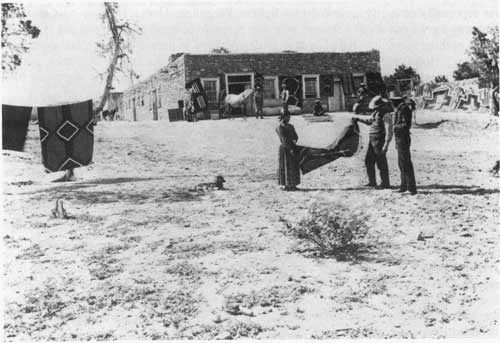
The Hubbell Trading Post is shown above.
By 1890, the Navajo were producing about $25,000 worth of trade goods each year. Their involvement with this larger market had an impact on native crafts. Since pottery and basketry did not have the same commercial appeal as other crafts, the people were producing less.
The Rug Period of Navajo Weaving is usually dated from 1890 to 1920. At this time, the weavers began making thicker weavings which could be used as rugs for sales outside of the reservation. Regional styles began to develop which were associated with traders or trading posts. The traders, sensitive to the tastes of non-Indians in distant markets, actively collaborated with the weavers to produce designs which would sell. One of the design features which was introduced in 1890 was the use of borders.
One of the major supporters of the Navajo rugs was the Harvey Company which featured them in their eating houses and newsstands along the route of the Atchison, Topeka, and Santa Fe Railroad. In 1900, the Harvey Company established the Indian Building in Albuquerque which featured Navajo weavers plying their craft so that the tourists could watch. Fred Harvey also contracted with the trader Lorenzo Hubbell to take his entire output of good quality Navajo weavings. Harvey insisted that the business needed standardization with regard to size, quality, and price.
Since the traders, particularly the Harvey Company, frowned on the use of Germantown yarn, the rugs tended to be woven with coarse handspun wool which was either dyed with aniline or left in its natural color. In 1897, J.B. Moore, who had the trading post at Crystal, New Mexico, began sending wool east to be washed and carded. This thoroughly cleaned wool could be more easily spun and consequently the technical quality of the rugs woven by the weavers in his area improved.
In addition to providing his weavers with cleaned wool, Moore also had a friend who designed some new styles using some traditional Navajo figures combined with non-Navajo motifs such as swastikas and frets which were common in the oriental rugs of this period. The patterns were enclosed by borders and favored natural wool colors: black, gray, brown, tan, and white.
Trader Juan Lorenzo Hubbell in the Ganado area encouraged weavers to use traditional Navajo designs from earlier time periods. In his trading post he hung watercolor design samples to help inspire the weavers.
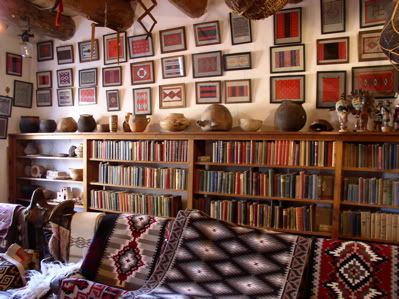
The inside of the Hubbell Trading Post is shown above. Note the designs on the walls.
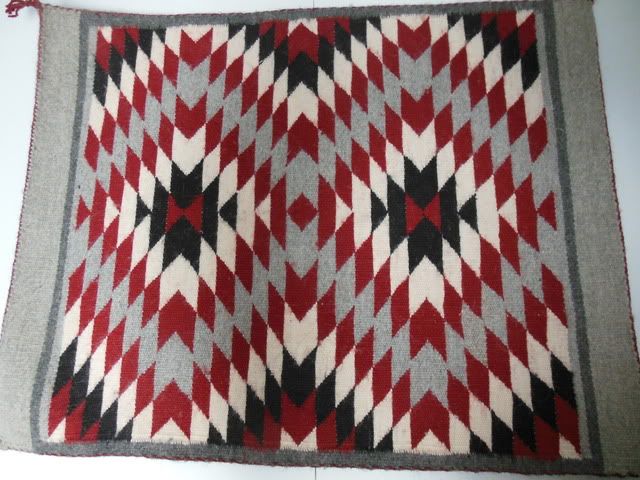
Shown above is a small rug in the razzle-dazzle style woven by a young girl and sold at the Hubbell Trading Post.
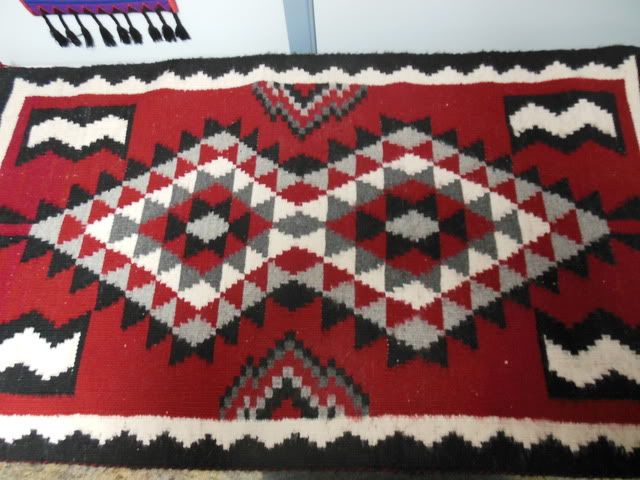
Shown above is an example of the Ganado Red style from my personal collection.
The Crystal tradition led to the distinctive style known as Two Gray Hills, named for the trading post on the east side of the Chuska Mountains south of Shiprock. At Two Gray Hills, the old Crystal style became elaborated and the technical excellence of spinning and weaving improved.
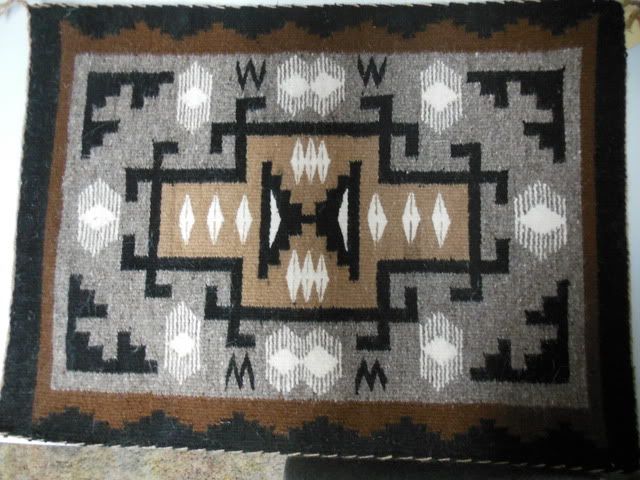
Shown above is a small Two Gray Hills rug from my personal collection.
The borders introduced by the Crystal tradition spread throughout the reservation and by 1910 could be found on most rugs.
In 1898, Navajo weavers responded to the patriotic fever of the Spanish-American War by making American flag blankets.
In 1903, John Lorenzo Hubbell began to provide Navajo weavers with commercially processed wool at his trading post in Ganado, Arizona. Other traders soon followed suit.
In 1910, the United States government in its infinite wisdom introduced Rambouillet sheep to the reservation. These sheep had oily, short-staple, crimpy wool rather than the long-staple wavy wool of the Navajo sheep. It is difficult, some say impossible, for a Navajo weaver to clean this wool with the traditional hand washing. Rugs woven from this wool were coarse and the whites tended to have a dirty gray cast. This helped bring Navajo weaving to a new low and by 1920 the demand for Navajo rugs and the prices paid for them had declined significantly.
In 1931, a group of traders, concerned about the protection of the Navajo rug, met in Gallup, New Mexico and formed the United Indian Traders Association. They advocated that the following standards to be used for Navajo blankets and rugs:
“Material used shall be virgin wool or virgin angora wool, the same shall be hand-washed, hand-carded and hand-dyed, the warp shall be all wool and hand-spun, the wool shall be all wool and hand-spun and the blanket shall be hand-woven by an Indian.”
In 1932, a number of Navajo sheep ranchers attended the Denver stock show and as a result they acquired a prize-winning Dorset ram in an attempt to improve the quality of wool available for blankets.
Today, Navajo rugs continue to be popular and continue to battle against cheap, imported imitations which use Navajo designs or designs which pretend to be Navajo. There are well over a thousand weavers on the Navajo reservation who do museum quality work and tourists can obtain high quality rugs at most of the trading posts on the reservation. The Hubbell Trading Post, which played an important role in the development of twentieth century Navajo rugs, is currently operated by the National Park Service. Tourists visiting Hubbell can not only purchase high quality rugs, but can also watch the weavers in action. While it is not uncommon for tourists to grumble at what they perceive as the high prices for these rugs, keep in mind that most weavers make well under minimum wage for the hours they spend at the loom.
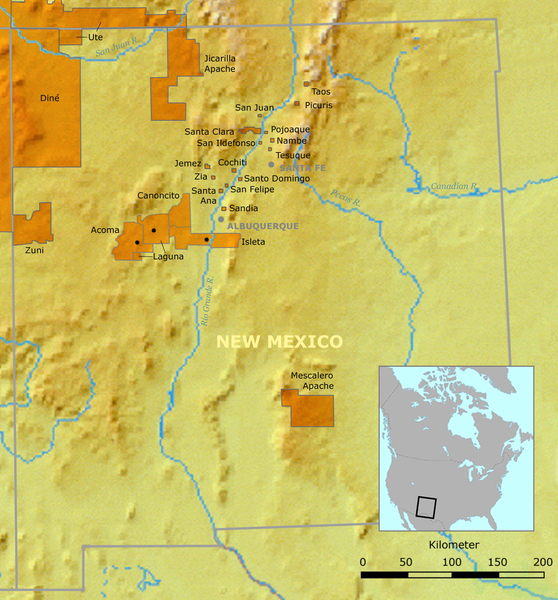
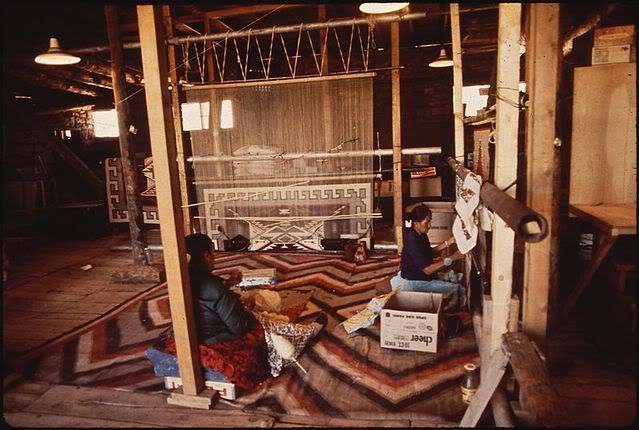
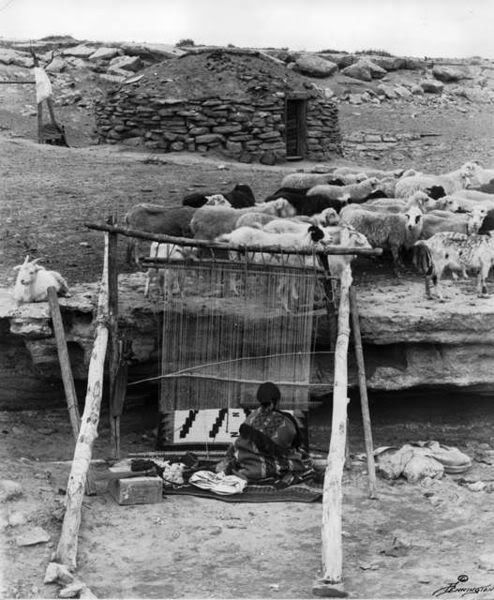
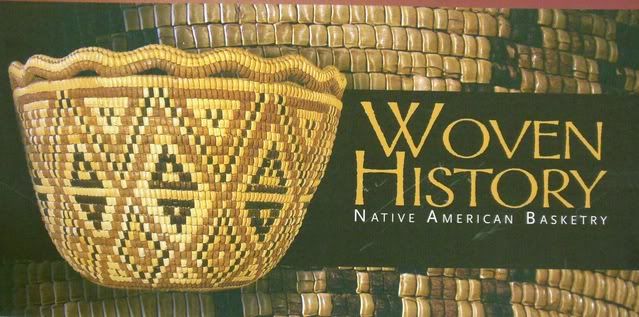
Leave a Reply